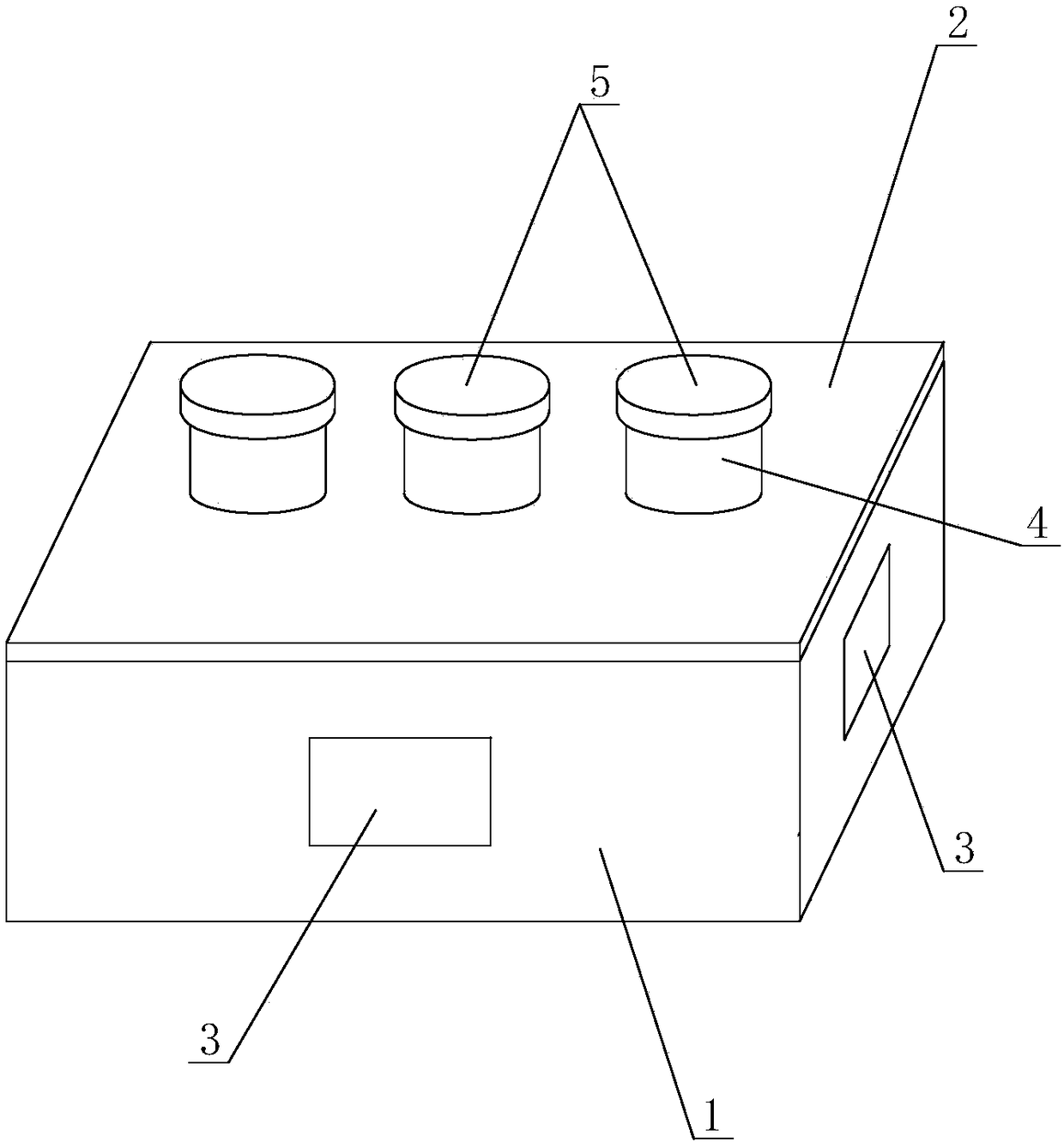Harmonia axyridia larva indoor industrialized culturing method
A heterochromia, factory-like technology, applied in the field of natural enemy insect breeding, can solve the problems of high cost and workload, cannibalism of larvae, and small number of larvae, so as to increase the workload, save the workload, and facilitate The effect of centralized management and feeding
- Summary
- Abstract
- Description
- Claims
- Application Information
AI Technical Summary
Problems solved by technology
Method used
Image
Examples
Embodiment 1
[0050] Embodiment 1: the hatching test of heterochromia ladybug egg
[0051] 1. From the 8°C cold storage, select eggs with storage days of 1d, 4d, and 7d for the test. The number of storage days in the cold storage was divided into treatment groups, and each treatment group had 3 repetitions. Egg hatching experiments were carried out at 25°C and 20°C, respectively.
[0052] 2. Calculate the hatching rate of 18 groups of experiments, compare the hatching rate difference under the same storage days and different temperatures, and compare the hatching rate differences at the same temperature and different storage days.
[0053] Table 1 Hatch rate of H. heterochromia eggs in different storage periods
[0054]
[0055] Note: 1d, 4d, and 7d in the treatment group represent the days of storage in cold storage respectively.
[0056] By comparison, it was found that at 25°C, the hatching rate of Heterochromia was high and stable; under the incubation condition of 25°C, the hatch...
Embodiment 2
[0057] The test of embodiment 2 Heterochromia ovum hatching time
[0058] From Example 1, it can be seen that the optimum hatching temperature for the eggs of the heterochromia is 25°C. Eggs stored in cold storage for 1d (group A), 4d (group B) and 7d (group C) were also tested, and the hatching time was counted. Each treatment was replicated three times. Count three times a day at 9:00, 15:00, and 19:00. Record the sum of the three statistics. For example, the first batch of experiments started on September 14, 2018, that is, September 15, 2018 is the first day, recorded as 1d, which is the number of days for eggs to hatch, and so on.
[0059] Table 2 The hatching number and hatching time of different storage time eggs
[0060]
[0061]
[0062] It can be clearly known from the above table that the eggs are concentrated on the third day for hatching, that is, the number of days for hatching is 2 days. That is, eggs stored in cold storage for 1-7 days have no signif...
Embodiment 4
[0064] 1) Select the eggs stored for 1d-4d from the cold storage at 8°C, and place them in a centralized incubation box (breeding conditions are temperature 25±1°C, humidity 70±10%, photoperiod 16L:8D). Place the number of eggs according to the size of the hatching box so that the eggs cover 50% of the bottom area of the hatching box. The hatching box is a transparent plastic box with a cover that can be closed. According to the production target, the number of eggs hatched in the same batch is generally 35% more than the desired number of adults.
[0065] Observe the hatching of the eggs three times a day, and the observation time can be set at 9:00, 14:00, and 17:00. During the last observation, if there are blackened egg masses, they can be taken separately to a unified incubator box, stored overnight in the cold storage, and taken out at 8 o'clock the next day for unified incubation.
[0066] In most cases, the hatching time of the piles is consistent, which is convenie...
PUM
 Login to View More
Login to View More Abstract
Description
Claims
Application Information
 Login to View More
Login to View More - R&D
- Intellectual Property
- Life Sciences
- Materials
- Tech Scout
- Unparalleled Data Quality
- Higher Quality Content
- 60% Fewer Hallucinations
Browse by: Latest US Patents, China's latest patents, Technical Efficacy Thesaurus, Application Domain, Technology Topic, Popular Technical Reports.
© 2025 PatSnap. All rights reserved.Legal|Privacy policy|Modern Slavery Act Transparency Statement|Sitemap|About US| Contact US: help@patsnap.com



